ePostcard #138: Windows on the World
“Among the many thousands of things I have never been able to understand, one
in particular stands out. That is the question of who was the first person who stood
by a pile of sand and said ‘You know, I bet if we took some of this and mixed it with a little potash and heated it,
we could make a material that would be solid and yet transparent. We could call it glass.’
Call me obtuse, but you could stand me on a beach until the end of time
and never would it occur to me to try to make it into windows.”
Bill Bryson from Notes from a Small Island (1995: pg.111)
Photo Credit: This photograph of “Forest House” is courtesy of Fine Homebuilding Magazine (JWT_Forest_House_5.jpg).
WINDOWS ON THE WORLD
Glass has become such an important part of modern life that the oft-repeated phrase “window on the world” is much more than a metaphor that speaks to a broadening of our horizon. Glass, in all its forms, allows us to experience the world around us in ways that would be impossible otherwise. I share with science writer Bill Bryson, the author of the quote that begins this final post in our glass series, the same fascination with the “who, when and why” that inspired the first human attempts to make glass. Even though we have been making glass for thousands of years, most people don’t fully appreciate what a critical role glass has played in our technological progress—exemplified by the crystal clear windows that grace our homes and buildings, the telescopes we use to explore our Universe, and the silica-rich computer chips in our computers and many other electronic technologies.
Photo Credit: Courtesy of George Kimathi and https://www.dignited.com (1_ePniwe23ojTUK5yCvhnnIA.jpg). Silicon is probably best known for its use in computer chips, but the electronics industry accounts for only about 5 percent of silicon usage in the U.S.
Photo Credit: Courtesy of Needpix (https://www.needpix.com/photo/909368) and Michael Gaida. This photo shows a spectacular skyscraper installation of photovoltaic windows in Dusseldorf, Germany.
You may be surprised to learn, as I was, that the words that you are reading right now were encoded into signals of light moving about 125,000 miles per second through fiber-optic cables. These lines, splayed out across mountains and oceans, are made of hair-thin glass fibers 30 times more transparent than the purest water on Earth. This technology was made possible in part by a team from Corning Glass. In 1970, building on decades of work by other researchers, Corning patented a type of cable that could transmit large amounts of information long distances. I’m guessing that you are reading this ePostcard on a smartphone, a tablet or on your laptop, so you also owe a debt to the late Steve Jobs, who in 2006 asked Corning Glass to make a very thin, strong screen for his new product, the iPhone. The result, Gorilla Glass, now dominates the market for mobile devices.
GLASSMAKING 101
Little is actually known about glassmaking in prehistoric times, whether it was an accidental discovery, which it might well have been, or an attempt to replicate naturally occurring forms of glass, such as the obsidian used in toolmaking. We may never know what inspired the creative shift to making glass as a unique substance. Current archeological research has revealed that glassmaking was underway at least 4,000 years ago in Egypt and Mesopotamia (the ancient region of southwestern Asia in present-day Iraq, which lies between the Tigris and Euphrates Rivers). The earliest glass creations were probably beads and amulets, perhaps made from by-products of other high-heat artisan industries developing at the same time, including ceramics (potters firing their clay vessels in kilns) and metalworking.
We know that glassmaking developed over a long period of time from experiments with a mixture of silica-sand or ground quartz pebbles, and an alkali (which lowers the melting point of sand). The earliest glassmaking workshops melted together the ingredients for glass and cooled them to make ingots (raw chunks) of usable glass. Glassmakers learned to color the ingots by mixing metallic oxides into the ingredients during the melting process. Popular colors for glass included royal blue and turquoise blue, produced by the addition of cobalt oxide and copper oxide, respectively, colorants which are still used today. Glassmakers were likely trying to imitate semi-precious stones, such as lapis lazuli and turquoise, which were highly valued by early cultures.
Photo Credits: Courtesy A. Mikkelsen, National Museum of Denmark.
Photo Credit: Courtesy of World History Encyclopedia, Osama Shukir Muhammed Amin and the British Museum.
As early as 3,300 years ago, ritual instructions for glassmaking in Mesopotamia were written on clay tablets in a cuneiform script meant to conceal trade secrets. These instructions were copied and recopied over the centuries. One group of clay tablets detailing glassmaking is from the library of King Assurbanipal (668-627 B.C.) and is currently housed in the British Museum. Part of the translation of the tablets (from Glass and Glassmaking in Ancient Mesopotamia by Leo Oppenheim) is copied below:
“When you set up the foundation of kiln to make glass, you first search in a favorable month for a propitious day, and only then you set up the foundation of the kiln. As soon as you have completely finished in the building of the kiln, and you go and place Kubu-images there, no outsider or stranger should enter the building thereafter; an unclean person must not even pass in front of the images. You regularly perform libation offerings before the Kubu-images. On the day when you plan to place the glass in the kiln, you make a sheep sacrifice before the Kubu-images, you place juniper incense on the censer, you pour out a libation of honey and liquid butter, and then only, you make a fire in the hearth of the kiln and place the glass in the kiln…
If you want to produce zagindurû-colored [greenish type of lapis lazuli] glass, you finely grind, separately, ten minas [about one pound] of immanakku-stone [sand], fifteen minas of naga-plant ashes, and 1 2/3 minas of ‘white plant.’ You mix these together. You put them into a cold kiln which has four fire openings, and arrange the mixture between the four openings… You keep a good and smokeless fire burning until the glass glows golden yellow. You pour it on a kiln-fired brick and this is called zukû-glass.
You place ten minas of “slow” copper-compound in a clean dabtu-pan. You put it into a hot chamber kiln… You crush and grind finely ten minas of zukû -glass. You open the door of the kiln and throw the ground glass upon the copper compound…When the glass assumes the color of ripe grapes, you keep it boiling for a time…After it has become yellow [hot], you observe some drops forming at the tip of the rake. If the glass is homogeneous, you pour it inside the kiln in a new dabtu-pan, and out of the cooled-off kiln emerges zagindurû-colored glass.”
WINDOWS, WINDOWS, WINDOWS
Photo Credit: Courtesy of The Met Fifth Avenue Gallery 405 and the Rogers Fund. Bowl with wheel-cut facets (ca. 6th–7th century A.D.)
Innovations in glassmaking and the speed with which glass objects could be made by blowing triggered a demand that spread across Western Europe and the Mediterranean. Glass, in fact, was one of the most important items of trade beyond the borders of the Roman Empire. Glass was used in almost every household from the Roman period onward, and it was also utilized in the construction of public buildings in the form of windows, mosaics and lighting fixtures. By the end of the 1st century AD, manufacturing glass was refined and done at scale that made it a commonly available material in the Roman world. Most of the windowpanes found in the excavations at Pompeii and Herculaneum date back to the 1st century AD. The AD 62 earthquake that occurred in the Vesuvius region caused severe damage to the buildings there, which required replacement with new windowpanes. Ancient glass, in fact, was in such high demand throughout the Roman Empire that an extremely important practice—the recycling of broken glass—became crucial to meeting this demand.
Photo Credit: Window glass courtesy of the British Museum collections.
Photo Credit: Assaf Peretz / Israel Antiquities Authority. These small fragments of raw glass were found at the Jezreel Valley archeological site in Israel. The installation that was discovered in the excavation is an example of one of these ancient production facilities.
To produce large quantities of raw glass on an industrial scale required specialized centers. In 2016, during excavations carried out as part of the Jezreel Valley Railway Project between Ha-‘Emekim Junction and Yagur Junction, the remains of the oldest kilns in Israel were discovered where commercial quantities of raw glass were produced. These kilns, c. 1,600 years in age (dating to the Late Roman period), indicate that Israel was one of the foremost centers for glass production in the ancient world. The kilns discovered by the researchers consisted of two compartments: a firebox where kindling was burnt to create a very high temperature, and a melting chamber, in which the raw materials for the glass (clean beach sand and salt) were melted together at a temperature of c. 1,200 C degrees. The glass was heated for a week or two until enormous chunks of raw glass were produced, some of which weighed in excess of ten tons. At the end of the manufacturing process the kilns were cooled; the large glass chunks that were manufactured were broken into smaller pieces and were sold to workshops where they were melted again in order to produce glassware.
According to Yael Gorin-Rosen, head curator of the Israel Antiquities Authority Glass Department, “This is a very important discovery with implications regarding the history of the glass industry both in Israel and in the entire ancient world. We know from historical sources dating to the Roman period that the Valley of ‘Akko was renowned for the excellent quality sand located there, which was highly suitable for the manufacture of glass. Chemical analyses conducted on glass vessels from this period, which were discovered at sites in Europe and in shipwrecks in the Mediterranean basin, have shown that the source of the glass is from our region. Now, for the first time, the kilns have been found where the raw material was manufactured that was used to produce this glassware.”
MODERN GLASS BLOWING IN AFGHANISTAN
Dateline: HERAT, Afghanistan.
Hunched over after decades of grueling glassware manufacture, Afghan glassblower Ghulam Sakhi deftly blows and twirls molten glass into delicate blue and green goblets and vases—a craft passed down for generations but now at risk of dying out. For 200 years, Ghulam Sakhi’s family has been blowing glass in the ancient Afghan city of Herat, where the once-thriving industry has been shattered by decades of war, poverty, and cheap imports. Ghulam estimates there are now only three glassblowers left in the country who use traditional clay ovens stoked with wood and rely solely on the power of their lungs to shape the stunning glassware they create. The tools and techniques used by Mr Sakhi have barely changed in generations, although instead of making glass from quartz, glassblowers now recycle bottles and broken windows, which are “easier to find”. The brick and corrugated iron workshop where Mr Sakhi toils operates only a few days a month owing to the lack of demand for the distinctive colored glassware that is more expensive than the Chinese-made products now readily available in the shops.
To help build global awareness, we would appreciate it if you would share this post with your friends and colleagues. Please choose one of the options below which includes email and print! Thank you.

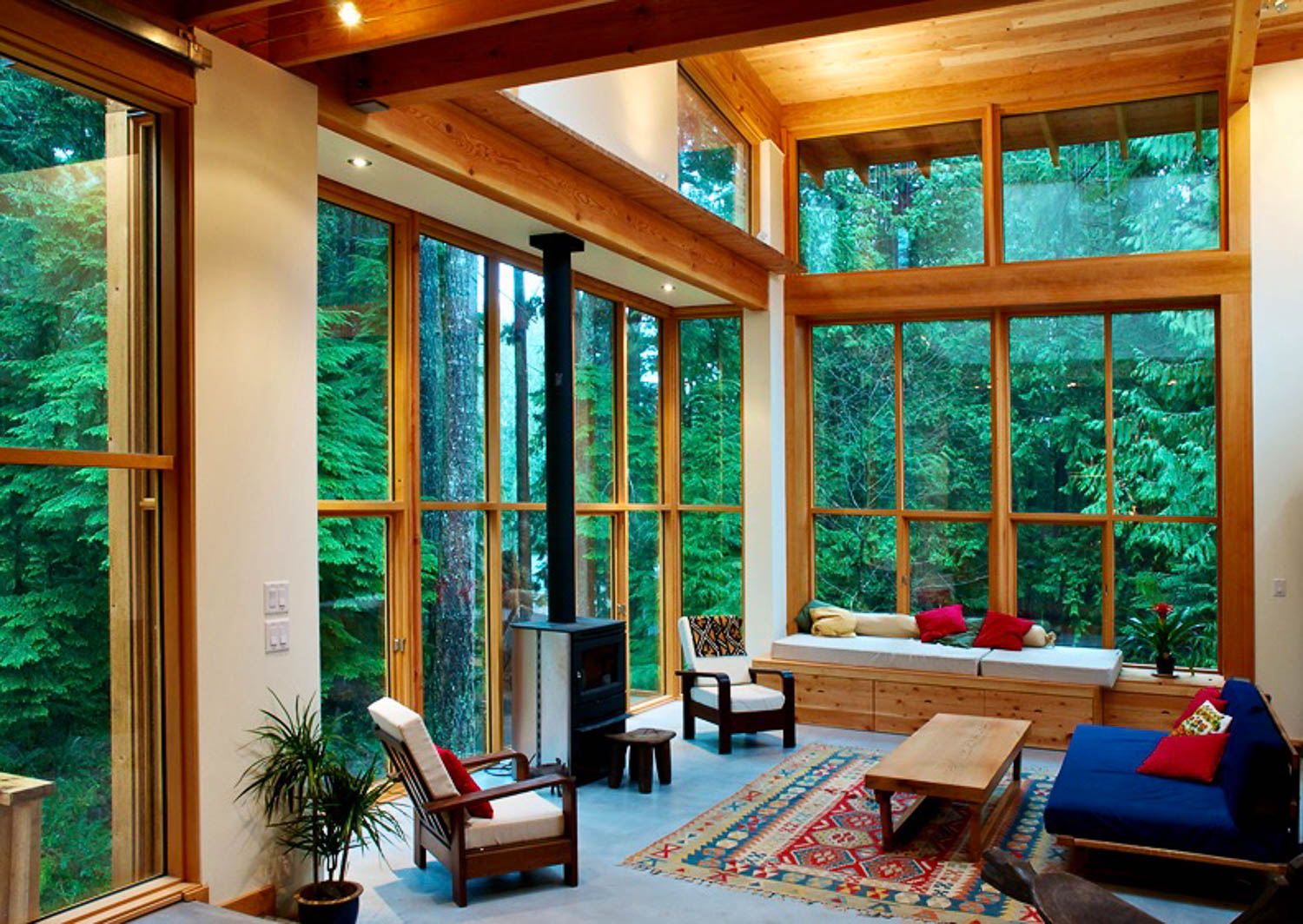


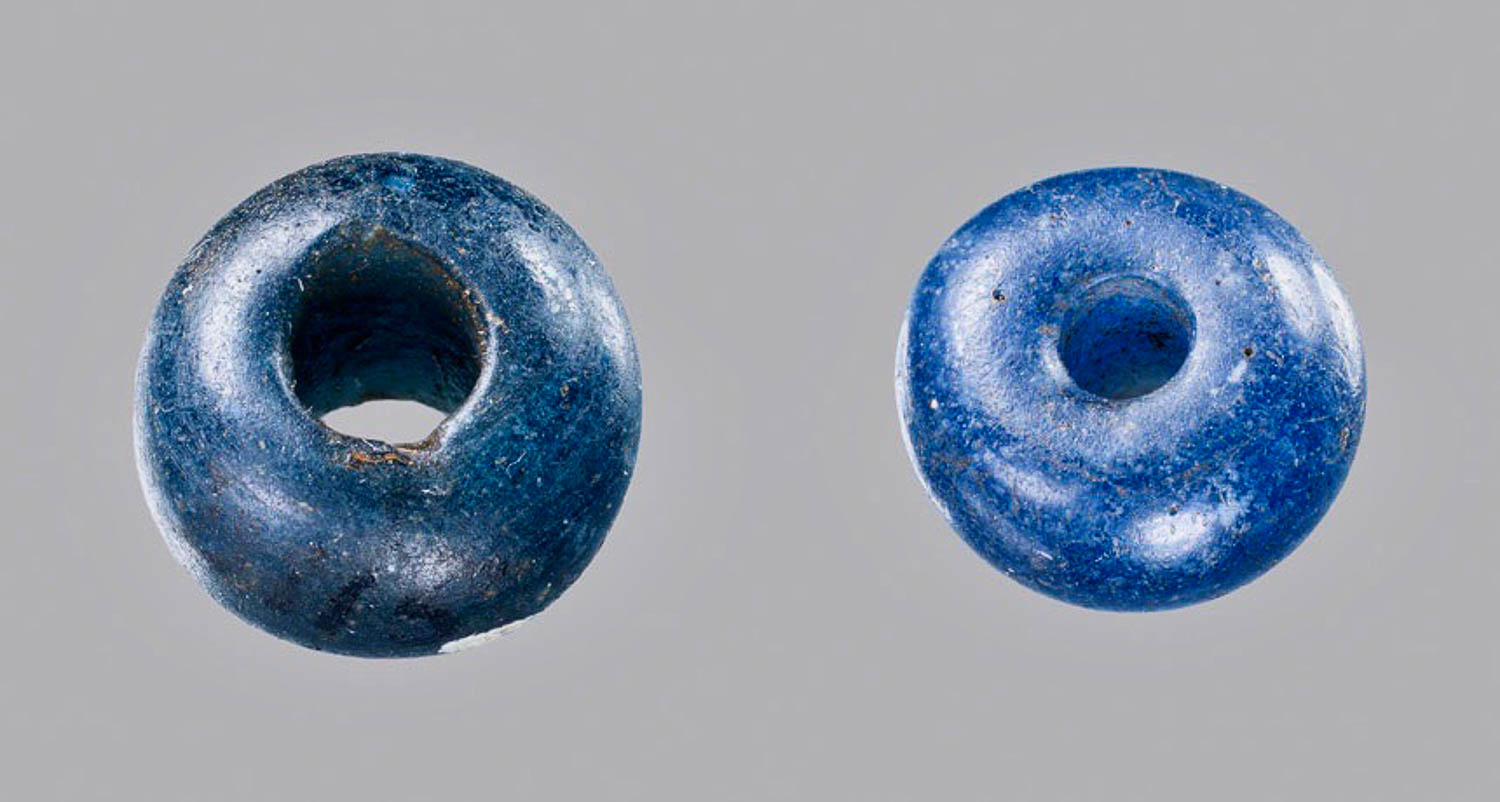

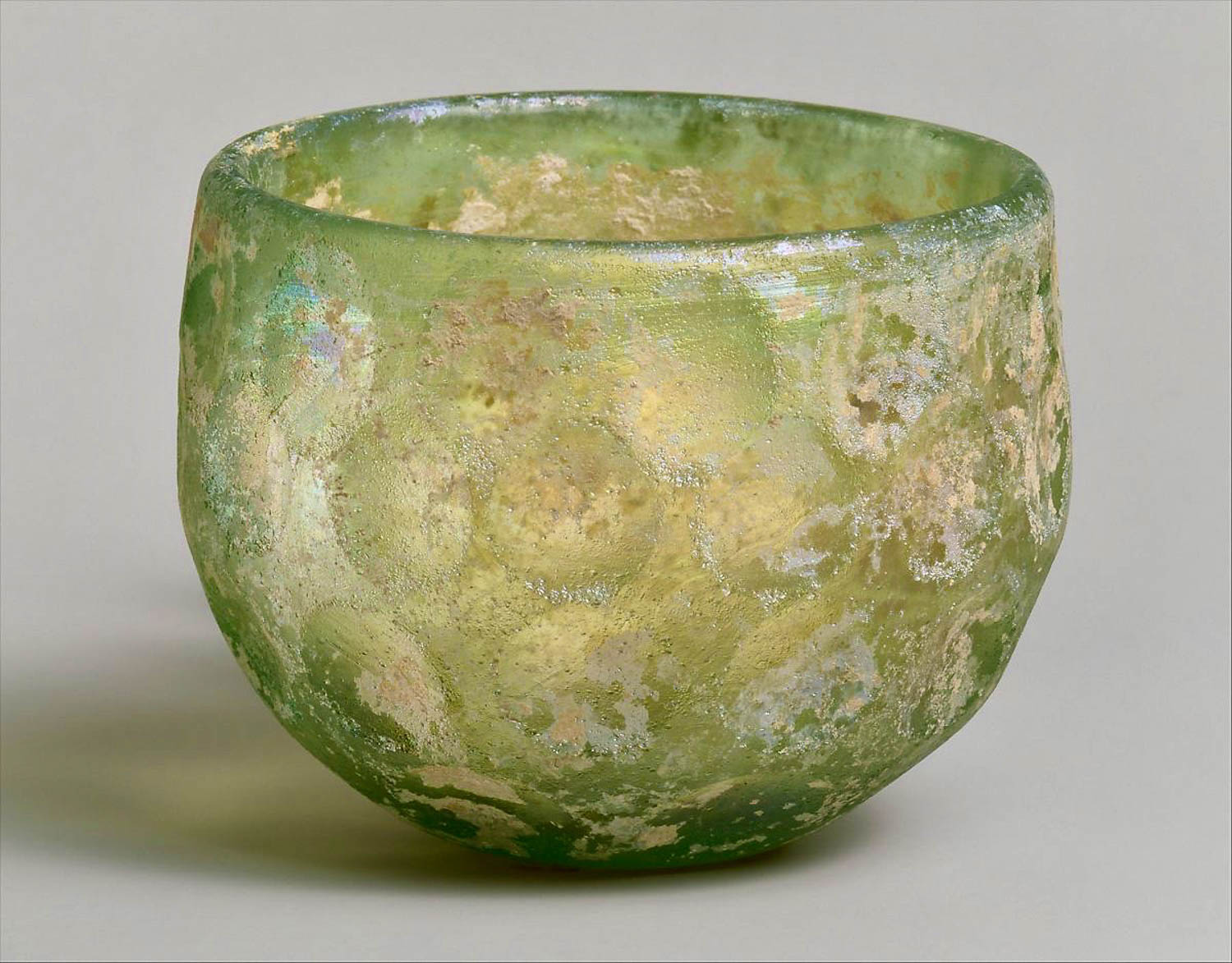

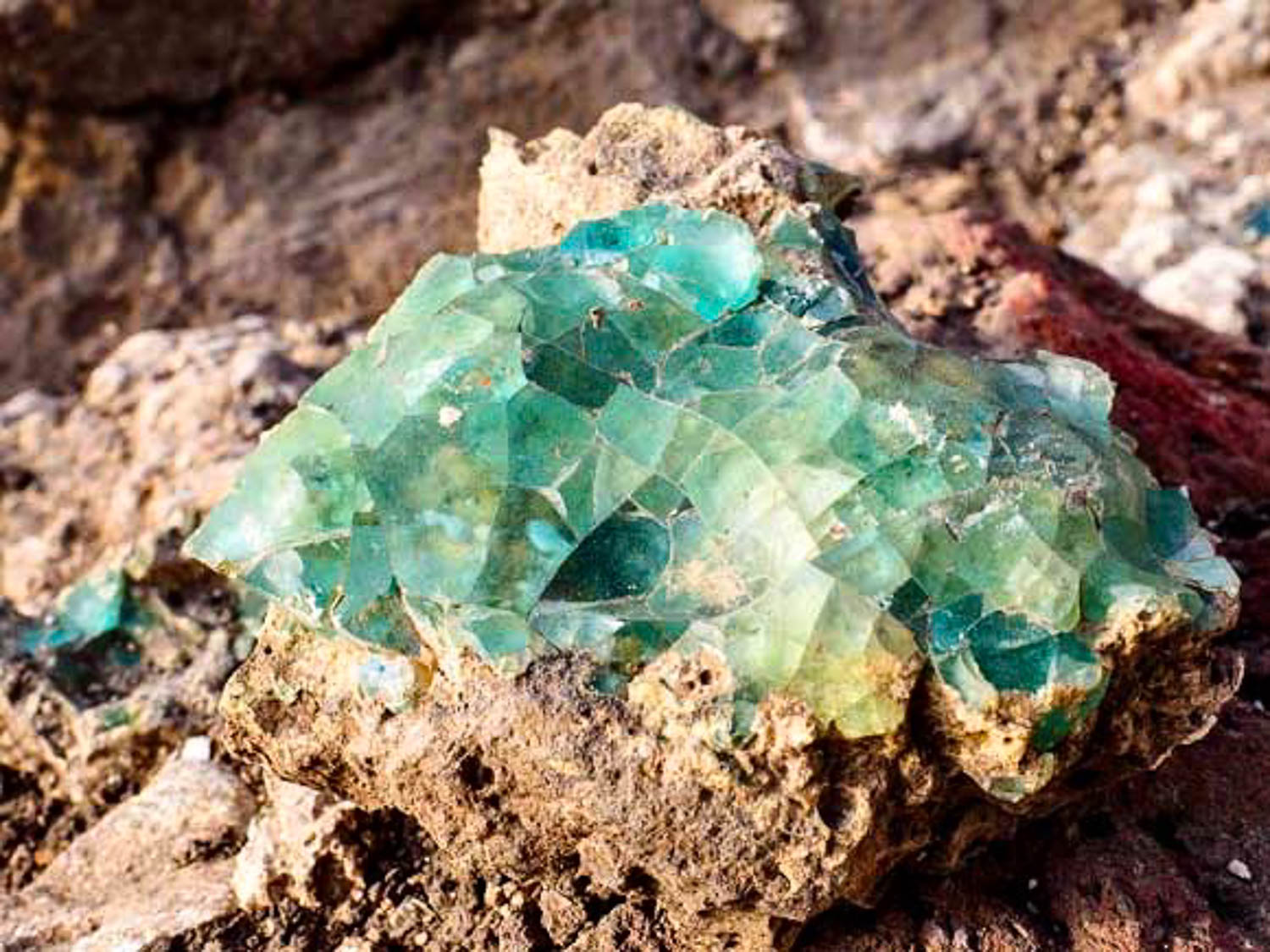
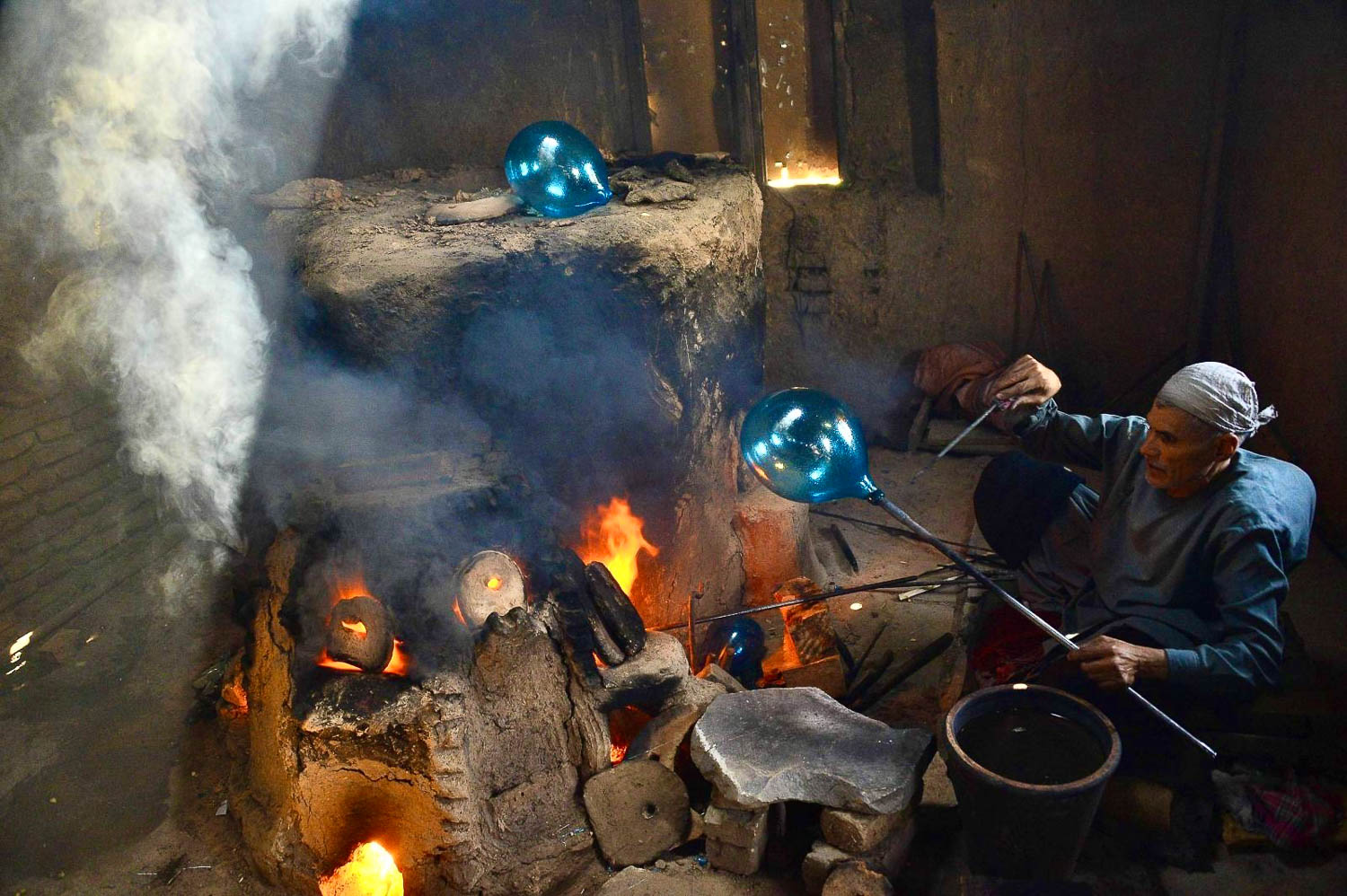
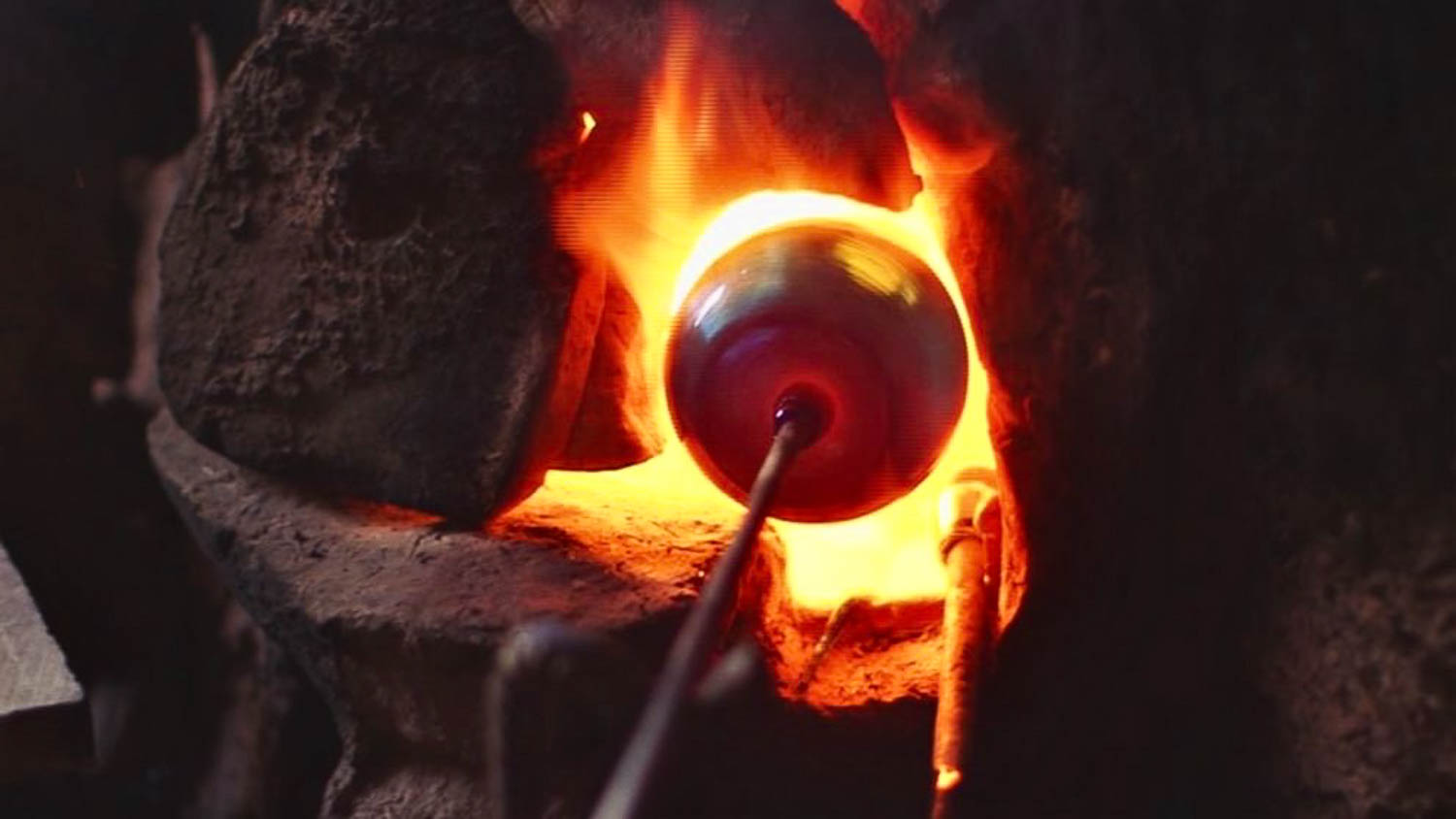
Such a fascinating and long history of glassmaking your words paint – and perfect pictures to help illustrate. That last picture of the Afghan glass blower, Ghulam Sakhi, is particularly beautiful – his colored blown glass is exquisite.
How sad that this kiln fired glass art form will soon be lost.
Sincere thanks to all my readers for your kind comments on the glass series! My upcoming ePostcard #139 will introduce “A Naturalist’s Bookshelf,” which will be posted once a month to highlight a great book in my library that readers might enjoy.